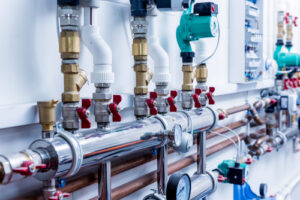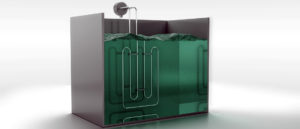Choosing the Best Heater for Heating Chemicals
Last updated on May 8th, 2025 at 03:53 am
Process heating is an important part of chemical production and it’s important to have the most cost effective and efficient method of heating. There are several options when it comes to heating chemicals. For example, it is possible to use gas powered burners or even a steam heat system.
Yet, gas may not be the most economical method and steam may require a boiler and other parts, and can be an inefficient method. Electric heat is the right selection for so many reasons, including cost effectiveness and pollution considerations. However, which kind of electric heat should you use? The answer may include several factors to consider.
Choosing the Best Heater for Heating Chemicals
Cost Factor
How much will it cost to install your new heat system? This is certainly a major consideration whether it is a new installation or you need to retrofit. Remember to take the efficiency of electric heat into consideration when you figure costs. In other words, you can recoup your investment over time, due to the savings you will receive.
When you figure costs, consider a ten year plan of service. This will help you evaluate the return on your investment. If the costs exceed your investment return in ten years, you may want to consider a more cost effective option.
Maintenance is another important consideration for costs. For example, will you need to remove your heating parts for cleaning, to keep corrosive buildup to a minimum? And speaking of corrosion, you’ll want to go with materials designed to protect your heating equipment from the effects of corrosion. It may cost more initially, but you will save in the long run by getting longer life and better performance from your equipment.
Control units are another important cost factor. For example, you may need to invest in explosion proof units in some applications. Some panels may need to be highly resistant to dust or water. Make sure your control system meets or exceeds your present and future needs.
Heating Units
When it comes to electric heating units, you have a lot of choices for equipment. Let’s look at some of the available options.
Immersion  Heat
Heat
Immersion heaters work by heating liquid from heat elements submerged in the liquid. It is an effective way to heat chemicals by direct heat. You’ll find 4 basic types of immersion heaters.
Flange Mount Immersion Heaters
Flange mount immersion heat is one of the most common methods. It is also a frequent choice for retrofitting electric heat from gas burner heat. Flange heaters use direct heat and can use RTD, thermostat, or thermowell controls, to send temperature readings to the control panel. To protect the heating elements, a high limit sensor is often employed.
Flange heating equipment can utilize either direct or indirect heat. Indirect heat is usually accomplished with a pipe or dry well heater. This heats the liquid while keeping heating elements free of corrosive chemicals. You can choose a number of materials for protecting your electrical flange heating equipment. Although steel flanges are available, they may not be suitable for most chemical applications. Stainless steel, copper, and even titanium can be the better choice.
Screw Plug Heaters
Screw plug units are designed to thread directly into tanks. They employ tubular elements welded to the threaded unit. Most of these units work well for small tank applications. If you need to heat flammable chemicals you can choose a screw plug unit with an explosion proof housing.
In Line Immersion Heaters
Also called circulation heaters, they work by pumping liquid through a heat unit and then returning it to the tank. A direct circulation heater heats the liquid and then pumps it back. An indirect circulation heater heats liquid via a closed heating system and circulates it through the tank to heat the commercial fluids. This is one of the most efficient ways to transfer heat and can be used with volatile chemicals. Depending on your needs, a variety of setups are available for circulation heat. In fact, the best suppliers will customize your system for your specific needs.
Over the Side Units
An over the side immersion heater is one of the best ways to retrofit the heating system for an open top tank. They can be ordered in a wide variety of sizes and configurations to fit many kinds of tanks. These systems are easily installed by running the components over the side of the tank.
These units are mobile and can easily be exchanged between tanks when needed, making them an economical and convenient choice for many companies. However, if you want heat located in the bottom of the tank, you may need to make another selection as over the side tank heaters are best suited for the upper portion.
Determining What is Best for You?
Now that you have a fairly good idea of some of the electric heating units available, it’s time to decide which one best fits your needs. When you have doubts, contact a reputable supplier for all the details.
Wattage Needs
Once you determine your wattage there is no need to choose the closest available size. For example, suppose you need 37 KW and this is the best choice. Instead of opting for a 40 or 45 KW standard or stock unit, you can choose a provider that offers custom wattages. This is the best way to maintain maximum efficiency and the best heating for your materials.
Heating Element Lengths
When you choose the right equipment provider, you can have your units made with any size heating elements. However, for some units (like flange heaters) you may need to install an internal support if the length exceeds 50 inches.
Sheath or Casing Materials
You can choose steel but you may need to go with a more expensive alloy to protect your heating units. Incoloy may be the best option.
Thermowells
With many chemical processes, you may want to have special built in thermowells. This will protect your temperature sensors from caustic environments.
Vented Housings
For many flange heating units, you can choose to have vented housings. This provides extra protection from connecting wire overheating and is essential in areas with high ambient temperatures and high heat requirements.
